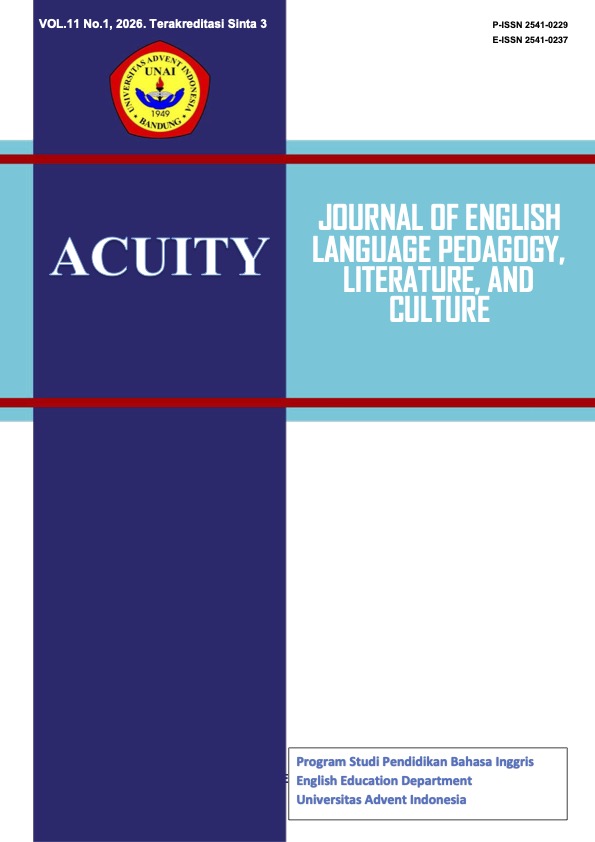Flipped Classroom: Shifting from Conventional Approach to Innovative Model
Keywords:
flipped classroom, blended learning, advantages, challenges, solutionsAbstract
This study aims to deliver a detailed account of the prevailing literature while offering significant observations by accentuating the primary aspects of the flipped classroom and its benefits, factoring in the hurdles related to this teaching technique. The modern world is transforming into an environment where a wide range of technologies emerges, undergoes testing, and subsequently spreads swiftly. This significant transformation is evident in various fields, especially in education. This shift calls attention to the essential task of rethinking and rigorously scrutinizing the prevailing educational paradigm, the positions of instructors and students, and the teaching resources in practice. Additionally, the transition from traditional methods to innovative strategies is inevitable. The flipped classroom blends engaging learning experiences through collaborative and individual tasks in class, while lower-level tasks and self-study occur outside using digital resources. The researchers perform a theoretical review to thoroughly explore the incorporation of the flipped classroom model into our educational practices. The flipped classroom framework presents a promising strategy for boosting student learning and engagement. By thoughtfully addressing the related challenges and capitalizing on the potential advantages, educators can cultivate a more vibrant and effective learning atmosphere. Additional studies are required to evaluate the enduring consequences of the flipped classroom approach and to ascertain effective methods for its application.
Downloads
References
Bergmann, J., & Sams, A. (2012). Flip your classroom: Reach every student in every class every day. Washington, DC: International Society for Technology in Education.
Bland, L. (2006). Applying flip/inverted classroom model in electrical engineering to establish life-long learning. In ASEE Annual Conference & Exposition. Chicago, IL.
Caligaris, M., Rodríguez, G., & Laugero, L. (2016). A first experience of flipped classroom in numerical analysis. Procedia-Social and Behavioral Sciences, 217, 838-845.
Cevikbas, M., & Argün, Z. (2017). An innovative learning model in digital age: Flipped classroom. Journal of Education and Training Studies, 5(11), 189-200.
Chilingaryan, K., & Zvereva, E. (2017). Methodology of flipped classroom as a learning technology in foreign language teaching. Procedia-Social and Behavioral Sciences, 237, 1500-1504.
Condliffe, B. (2017). Project-Based Learning: A Literature Review. Working Paper. MDRC.
Davies, R. S., Dean, D. L., & Ball, N. (2013). Flipping the classroom and instructional technology integration in a college-level information systems spreadsheet course. Educational Technology Research and Development, 61(4), 563-580. https://doi.org/10.1007/s11423-013-9305-6
DeLozier, S. J., & Rhodes, M. G. (2016). Flipped classrooms: A review of key ideas and recommendations for practice. Educational Psychology Review, 29(1), 141–151. https://doi.org/10.1007/s10648-015-9356-9.
Driscoll, M. (2002). Blended learning: Let's get beyond the hype. E-Learning, 3(3), 54.
Fuchs, K. (2021). Innovative teaching: A qualitative review of flipped classrooms. International Journal of Learning, Teaching and Educational Research, 20(3), 18-32.
Froyd, J., & Simpson, N. (2008). Student-centered learning addressing faculty questions about student centered learning (Paper presented at the Course, Curriculum, Labor, and Improvement Conference, Washington DC).
Gannod, G. C., Burge, J. E., & Helmick, M. T. (2008). Proceedings of the 30th international conference on software engineering: Using the inverted classroom to teach software engineering. New York, NY: ACM.
Hamdan, N., McKnight, P., McKnight, K., & Arfstrom, K. M. (2013). A Review of flipped learning. Retrieved from: http://www.flippedlearning.org/cms/lib07/VA01923112/Centricity/Domain/41/LitReview_FlippedLearning.pdf
Herreid, C. F., & Schiller, N. A. (2013). Case studies and the flipped classroom. Journal of College Science Teaching,42(5), 62-66.
O’Flaherty, J., & Phillips, C. (2015). The use of flipped classrooms in higher education: A scoping review. The Internet and Higher Education, 25, 85–95. https://doi.org/10.1016/j.iheduc.2015.02.002.
Khan, S. (2011). Let's use video to reinvent education, Speech presented at TED 2011. Retrieved from:
https://www.ted.com/talks/salman_khan_let_s_use_video_to_reinvent_education
Khan, M. S. H. (2015). Emerging conceptions of ICT-enhanced teaching: Australian TAFE context. Instructional Science, 1–26. https://doi.org/10.1007/s11251-015-9356-7.
Khan, M. S. H., Shamim, M. R. H., & Nambobi, M. (2018). Learning styles and online tools: How to construct an effective online learning environment Optimizing student engagement in online learning environments. In IGI global.
Khan, M. S. H., & Markauskaite, L. (2017). Approaches to ICT-enhanced teaching in technical and vocational education: A phenomenographic perspective. Higher Education, 73(5), 691–707. https://doi.org/10.1007/s10734-016-9990-2.
Kuhn, D. (2003). Understanding and valuing knowing as developmental goals. Liberal Education, 89(3), 16-21.
Long, T., Cummins, J., & Waugh, M. (2016). Use of the flipped classroom instructional model in higher education: Instructors’ perspectives. Journal of Computing in Higher Education, 29(2), 179–200. https://doi.org/10.1007/s12528-016-9119-8.
Nurfaiziyah, A., & Aminin, Z. (2021). Teachers’ Perceptions on The Implementation of Flipped Classroom Model in Learning Writing. PROJECT (Professional Journal of English Education), 4(5), 884-892.
Paul, J., & Criado, A. R. (2020). The art of writing literature review: What do we know and what do we need to know? International business review, 29(4), 101717.
Paré, G., & Kitsiou, S. (2017). Methods for literature reviews. In Handbook of eHealth evaluation: An evidence-based approach [Internet]. University of Victoria.
Retrieved 15 May, 2020, from https://tl.hku.hk/2018/02/designing-your-own-flipp
Richards, J. C., & Rodgers, T. S. (2014). Approaches and methods in language teaching. Cambridge university press.
Rotellar, C., & Cain, J. (2016). Research, perspectives, and recommendations on implementing the flipped classroom. American journal of pharmaceutical education, 80(2), 34.
Source, & Hku. Designing your own flipped classroom: Online and pre-class elements.
Staker, H., & Horn, M. B. (2012). Classifying K–12 blended learning. Mountain View, CA: Innosight Institute, Inc.
Strayer, J. (2009). Inverting the classroom: A study of the learning environment when an intelligent tutoring system is used to help students learn. Saarbrücken, Germany: VDM.
Talan, T., & Gulsecen, S. (2019). The effect of a flipped classroom on students’ achievements, academic engagement and satisfaction levels. Turkish Online Journal of Distance Education, 20(4), 31-60.
Vahidi, Z., & Khosravi, A. (2021). Representing the Lived Experience of High School Students in the Flipped Classroom: Benefits and Challenges. Iranian Evolutionary Educational Psychology Journal, 3(3), 345-356.
Van Alten, D. C., Phielix, C., Janssen, J., & Kester, L. (2019). Effects of flipping the classroom on learning outcomes and satisfaction: A meta-analysis. Educational Research Review, 28, 100281.
Woodruff, A. H., & Griffin, R. A. (2017). Reader Response in Secondary Settings: Increasing Comprehension through Meaningful Interactions with Literary Texts. Texas Journal of Literacy Education, 5(2), 108-116.

















